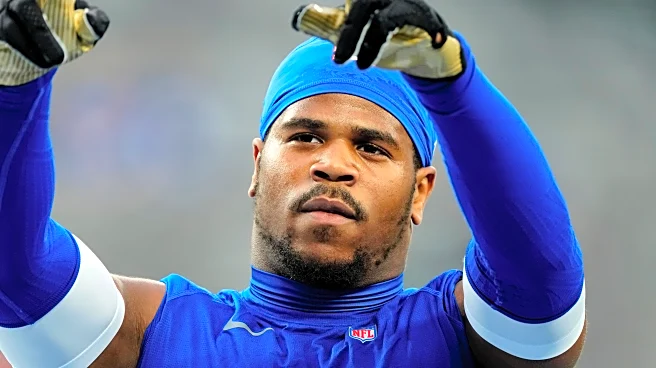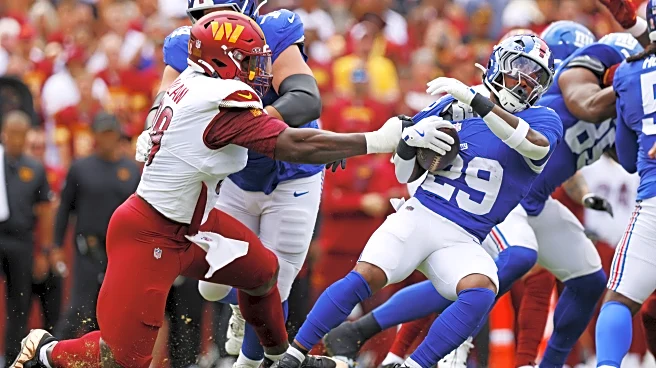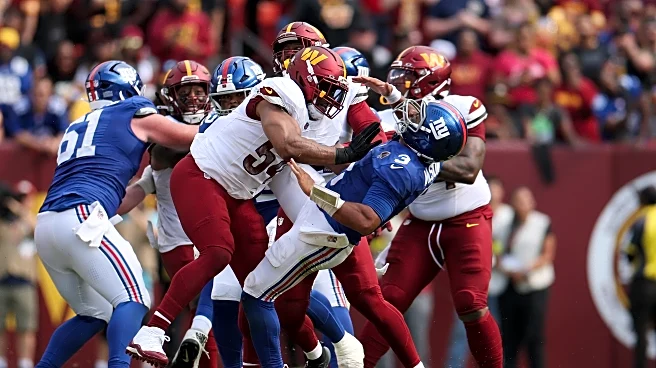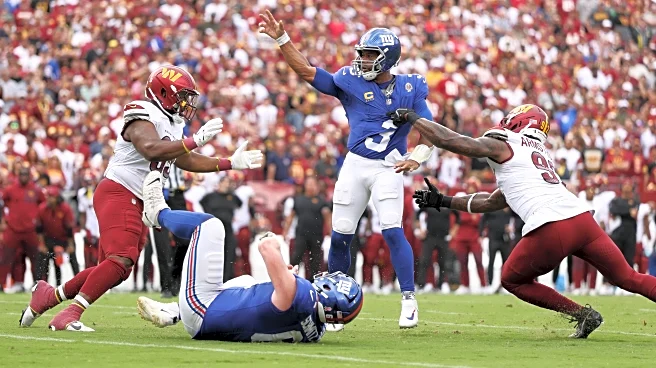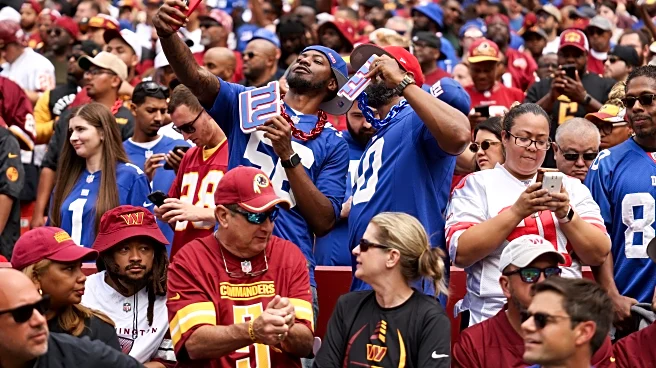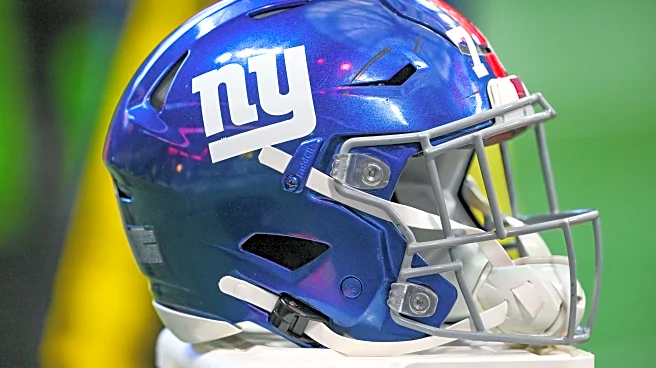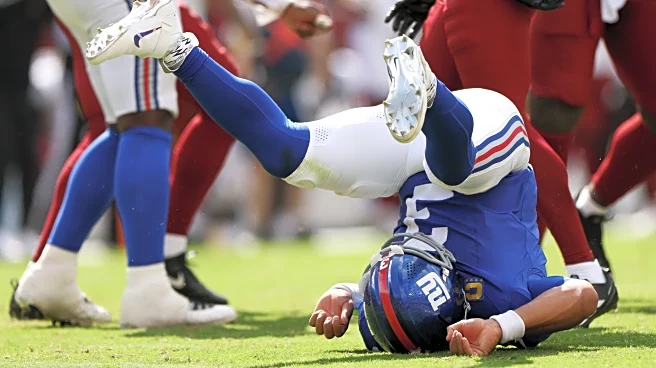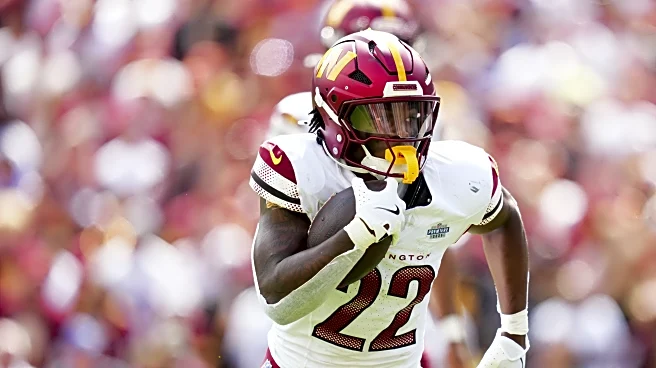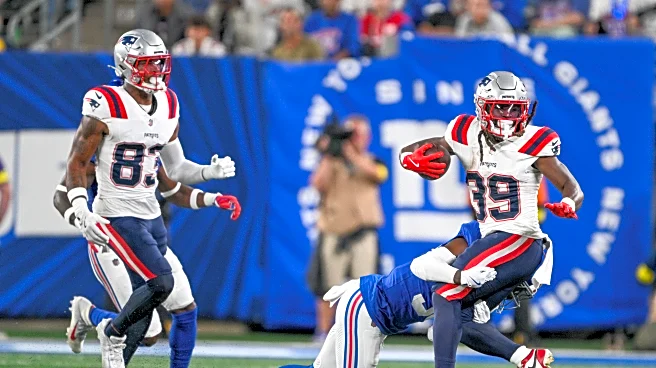
The New York Giants lost their third consecutive opening game on Sunday, falling to the Washington Commanders by a wide margin. The momentum generated by the Giants, now revealed as ostensible, is all but vanquished. If there was one bright spot for Giants fans after the Week 1 debacle, it was rookie edge defender Abdul Carter, the team’s No. 3 overall.
Carter played 38 of 70 defensive snaps and did not see the field after the Deebo Samuel 19-yard rushing touchdown with more than seven minutes left
in the fourth quarter. Carter earned the highest Pro Football Focus grade of any Giants’ player, which may not be saying much, but his impact was felt on defense and special teams; below, he utilizes his unique talents to block a punt:
The Giants’ offense then went on to possess the football for 48 seconds — gained zero yards — and gave it right back to Washington in a 14-3 game during the third quarter. It’s a new season, with a similar story, bad execution, and no complimentary football.
Nevertheless, Carter looked the part and was used in a variety of different ways by the Giants; perhaps not nearly enough, with just 38 snaps. Let’s see how defensive coordinator Shane Bowen aligned the talented rookie in Week 1 against one of the most dynamic duel-threat quarterbacks in the NFL.
QB spy
Much has been made of Carter’s deployment — or misdeployment — as a quarterback spy in Week 1. Bowen, whom I have my gripes with, used Carter as a spy three times when New York was in man coverage (Cover 1) with Kayvon Thibodeaux and Brian Burns manning the edge:
This is an appropriate use of Carter’s skill set against Jayden Daniels with the other personnel of the Giants. New York attempted to use Bobby Okereke as a spy twice, and it resulted in two rushes for 12 yards by Daniels off the scramble.
Carter can manage a variety of roles and locations to get three of the Giants’ best defenders on the field: Carter, Burns, and Thibodeaux. Carter may already be the best pure pass rusher of the three, but he’s also the most natural in space, having spent two seasons at Penn State as a linebacker.
Ideally, I’d love to see Carter pin his ears back on every pass attempt and just get after it. Still, his curveball skill set gives Bowen a much-needed wrinkle to energize an otherwise insipid defensive philosophy — one that could become a real conundrum for opposing offenses.
Second-level usage
Twice on second-and-long, the Giants blitzed Carter from the linebacker position to provide interior pressure and isolate less athletic guards and centers against Carter’s uber-explosive lateral movements.
There’s a good argument that Carter was held on both of these plays. It’s rare to find players who can move this athletically in a phone booth. Plus, Carter’s lateral movement skills, coupled with his hand usage, display the precocious nature of the third overall selection.
Aligning Carter as a spy at the second level allows the Giants to set up blitzes like the two above. It also helps dictate protection and set up one-on-one matchups for Dexter Lawrence and others when he does spy, due to Carter stepping toward the line of scrimmage to occupy attention and waste a blocker.
Kingsbury: Leave him unblocked
Commanders offensive coordinator Kliff Kingsbury never said this outright, but Washington’s plan was clear: much of the game was called away from Carter. Kingsbury excels at tilting the math in the run game — leaving backside pursuit defenders unblocked and forcing them to respect Jayden Daniels’ legs, while simultaneously creating front-side gaps with extra pulling linemen. It’s a nightmare to defend. Below are several examples:
One way to eliminate a difficult player to block is to avoid blocking him and instead put him directly into conflict. From the offensive perspective: whichever decision he makes, we make the other! That or just throw the football away from him unblocked on the backside.
There was this incredibly savvy play by Carter above. He’s not meant to be unblocked, but Laremy Tunsil (78) fails to react at the snap. With seven seconds left in the half, Carter received a free rush on Jayden Daniels, and he remained poised not to allow Daniels to avoid him, once the star quarterback was framed up properly. He didn’t leave his feet or get too eager into contact; he just pressured Daniels and forced an intentional grounding that ended the half — an incredibly savvy play by the rookie.
Still, Washington did a good job of slowing Carter down by forcing him to be patient and wait. Kingsbury deserves credit for this approach, but it wasn’t like Kingsbury was averse to running at Carter in certain instances.
Carter: Play-side run defense
Kingsbury did not run at Carter frequently, but did employ these two power concepts when Carter was the playside defender. First (top) was a shotgun G-Lead with both guards pulling toward Carter, who was the boundary edge. Carter does a fantastic job watching John Bates (87) fake outward before going to the second level; upon realizing that, Carter promptly squeezed tightly down the line of scrimmage, dipped his inside shoulder, and avoided clean contact from the pulling playside guard. He absorbed the hit and presented his number to Bill Croskey-Merrit (22). This is an exceptional run defense rep by Abdul Carter.
In the second play (bottom), Carter is the playside edge on the creative end-around crack orbit handoff to Deebo Samuel (1). Luke McCaffrey (11) does a good job on the seal block of Carter — receivers have advantageous angles to pin down the edge, which allows the pulling players space to operate; it’s a simple pin-pull concept with creative movement in the backfield. Samuel goes for a touchdown, and this was the last time we saw Carter on defense — the play happened with just over 7 minutes left in the fourth quarter.
Kinsbury attempted to run an end-around at Carter, who was the boundary side edge to the double-Y set on first-and-ten. Bates does a good job holding Carter up a bit, but the rookie is able to disengage and work down the line of scrimmage. Cor’Dale Flott (28) aggressively attacked downhill to force a negative run, with Bobby Okereke’s (58) help.
Rush the passer
Carter had 25 pass rush reps in the game and finished with four pressures (team high) and a half-sack. Kingsbury frequently harassed the Giants’ edge defenders with chips from the backs and tight ends. Carter dealt with that on a couple of occasions:
Despite Austin Ekeler’s (30) contact, Carter squared up Laremy Tunsil (78) and forced a holding penalty off a beautifully deployed arm-over move, combined with his impressive lateral agility. Carter may quickly become one of the most feared defensive players to block in a phone booth.
Tunsil does a solid job closing the inside off from Carter, but the smooth nature of the rookie’s inside spin is evident on tape. Carter is a threat high-side with his bend/rip, and he has an array of inside pass-counters that force offensive tackles to stay honest in their set.
Carter, with the help of Flott, who is not pictured, caused Brian Burns’ first sack. Washington aligned in a 4×1 set with Samuel as the outside receiver, with three receivers inside of him. It was an obvious screen situation that the Giants correctly read. Watch Carter use his quickness to get into Daniels’ passing lane and force the quarterback to tuck the football away as Conerly Jr. worked over to the screen side. Again, another brilliant play by Carter, who really didn’t play like a rookie in his first game.
The Giants did not work their twist game much against Washington, which was consistent with their two matchups against the Commanders last year. It’s risky for the defense to exchange gaps and move that much when the quarterback is as mobile and dangerous as Jayden Daniels. Expect to see it more against less athletic quarterbacks, but above is one play where Carter and Roy Robertson-Harris (95) ran a game, and the rookie nearly came away with a pass defended.
Align Carter inside
The Commanders frequently found themselves in long second and third-down situations, where the Giants would utilize Carter inside the tackles as a 4i shade or three-technique. This positioned Carter — a much superior athlete to interior offensive linemen — in an advantageous position, while throwing a curveball at Bobby Johnson’s protection. His path would sometimes be outside, isolated against a tackle or it would be against a guard. Below are a few examples:
Carter’s footwork and hand usage work in seamless combination, and those traits become even more pronounced when he’s matched against guards. That versatility allows Bowen to diversify his defense, both in coverage looks and in simulated pressure packages. In Week 1, Carter primarily rushed the passer when aligned with a hand in the dirt, but adjustments to his role are likely as matchups dictate.
Final thoughts
Abdul Carter performed well in his first regular-season NFL action. He is the Swiss-Army Knife of the Giants’ defense, who also made a splash on special teams. It’s difficult to deny his talent and what he may offer the Giants moving forward. He made a couple of high football IQ plays, generated several pressures, was a focal point of Kingsbury’s game plan, and had a few quality reps against the run. I would love to see him play more snaps, but that will come in time.
